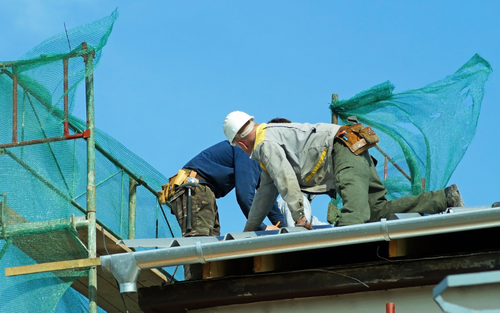Watch Out for These High-Wind Dangers When Working in a Construction Site
You can never underestimate the power of the wind when working on a construction site. Strong winds can occur anytime, especially during the winter, but they are more than a nuisance. Strong winds can put the health and safety of your workers at risk. Moving equipment, opening doors, and simply walking outside can all be challenges when the wind blows at 50 mph. Learn how to protect your crew from the dangers of high-winds in a construction site.
Common High Wind Construction Dangers
High winds can be dangerous on several fronts. The most pressing is often the opening and closing of doors. Strong winds may force doors to open or close suddenly. The door can easily swing into a person’s body or face, causing injury. The door may fly open when you least expect it if it isn’t properly latched.
High wind can also affect your lift operations. These winds can cause debris, materials, and even pieces of equipment to blow around. Sharp objects can easily injure someone if they are moving through the air. These items could also crash into the door or window, leading to the spread of broken glass. Workers may have trouble towing or hauling equipment when the wind is strong. A sudden gust of wind can blow the trailer or cargo to one side, leading to spills and accidents.
Finally, strong winds only increase the risk of frostbite. These winds tend to be the strongest during the winter months before slowing down in the summer. They lower the temperature outside. This could lead to workers developing frostbite in a matter of minutes if their bare skin is exposed to the wind.
Safety Tips for Working in High Wind
You should focus on addressing each of the threats mentioned above when asking your team to work in high-wind environments.
When it comes to opening and closing doors, do your best to secure the door to the frame when it is closed. Consider using a chain or latch if the door can come loose easily. Encourage your workers to open doors slowly. They should be prepared for a sudden gust of wind by keeping their hand firmly on the handle. Limit your team’s exposure to the wind by having them work on the side of the building where the wind is less severe. Have your workers exit the building or vehicle on the opposite side from where the wind is blowing.
If the wind is strong enough to blow your materials or nearby debris around in the air, do your best to secure these items to the ground or store them inside. Keep them away from where your team is working, including areas with glass windows and doors. Safety glasses are a must-have, as small debris and particles around the job-site can easily get lodged in your workers eyes.
When battling extreme weather and strong winds, research the temperature outside before starting the shift. Adjust your expectations based on the wind speed. Contact the local weather service to see how the wind may affect your workday. Consider canceling the shift or moving your team indoors on days when the wind is above 40 mph.
Make sure everyone on your team is wearing proper PPE including winter workwear with thick insulating layers to reduce the threat of frostbite. No one should have their bare skin exposed to the wind. Stay warm during winter storms and watch out for warning signs of frostbite, including chills, fever, dizziness, and shortness of breath.
Eye protection like safety glasses and goggles may come in handy to work through strong winds without having debris get blown into your eyes.
Keeping your team safe when working in high wind is no easy feat and your workers will need to use caution when working outdoors. Find the proper safety equipment for your lift operations to give your team more peace of mind in the field.
Recent Posts
-
Customizing Gas Detectors: Tailoring Solutions to Fit Your Unique Requirements
In today’s diverse industrial landscape, a one-size-fits-all approach to safety simply doesn’t cu …Jul 3rd 2024 -
10 Ways to Prevent Wildfires
You can prevent wildfires by extinguishing flames before you leave the worksite. Avoid practicing …Jul 1st 2024 -
ANSI/ISEA 138 Safety Gloves: Ensuring Hand Protection
The human hand is an anatomical masterpiece and arguably the greatest tool attached to our bodies …Jun 25th 2024





